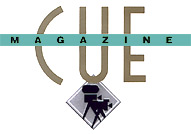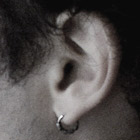

The Realm of Sound Design
It used to be that the title of sound editor was enough. It was enough for James G. Stewart when he worked with Orson Welles on Citizen Kane. It was enough for Frank E. Warner when he worked with Martin Scorcese on Taxi Driver. And it was enough for every other sound artist who wielded a splicer and maneuvered a moviola from the emergence of talkies until the late seventies. But somehow, as the technology for audio post-production began changing, the title didn’t seem to cover all the territory.
Maybe it was the added responsibility of placing sounds within a 360 degree Dolby Surround landscape that made the terms "sound" and "designer" seem so natural together. Although associated with the use of digital audio workstations and their ability to manipulate and combine waveforms, the "sound designer" title actually predates the appearance of digital technology in film sound editing. Coined by Walter Murch for his work on Apocalypse Now, the term more closely parallels the introduction of SMPTE timecode, synchronizers, and 24-track tape recorders into feature film audio post. After half a decade of incredible differentiation and specialization, technology was combining the disciplines of the music recordist and the film sound editor. New tools and tasks produced a new job description. It doesn’t matter that the unions don’t like it, or that the Academy doesn’t recognize it. What matters is that the importance of sound in the communication process be recognized. The sound artist should be given the opportunity to apply that power when putting sound to a visual medium. This is true whether dealing with a feature film or a television commercial.

|
It’s the exceptional producer or director who recognizes the nuances communicable in all levels of the audio track. Most will tune in to the subtlety required for the perfect voice read, giving detailed direction and investing much time and money to achieve the "right" read. And most will fight for their composer of choice, going back and forth throughout the editing process to hone in on exactly what they want musically. But fewer recognize the importance of the sound effects which are chosen to accompany their images. They are too often content with the literal–see a dog, hear a dog. This is where an audio point of view can help support the premise of the entire piece. This is the realm of sound design.
The ear is different than the eye, and these differences should be exploited in the creation of film and video soundtracks. The eye has to be seduced into watching a limited area, a defined screen. Manipulated through means of ego identification, visual excitement, or verbal brow-beating, the eye’s natural instinct is to wander. The ear, however, is a much easier sensor to communicate with. It doesn’t blink, it doesn’t sleep, and it is omni directional–it is always open, always listening, and it will perceive signals (like it or not) from all directions.
On a creative level this allows us to pick sounds that "feel" right for a scene–that resonate with an image. Because our ears take in so much information, we can freely put in sounds that do not originate from within the picture, but which work on an emotional level. If we are in an interior we can add sounds the might occur outside, sounds that will support what our script is trying to communicate. If our character is feeling edgy and unsettled, we might hear, almost subliminally, the sound of an abrasive car horn, throbbing boom boxes, or sirens. The sounds selected would of course depend totally on the emotional or conceptual intent of the scene. Pulling a "city ambiance" out of the library, or even using one from the actual location, might fill up the emptiness of the scene, but it will not add to it. More often we are combining layers of sounds until the combination of sound and the picture comes off the screen as one experience.
Even in the choice of literal effects, nuance and subtlety exist. Every car skid, door slam, cough, walk, and splash, have a character of their own which may or may not enhance the idea behind the visuals. Digital audio workstations now give us the power to pitch shift, equalize, reverse and process sounds with incredible speed and ease. This has opened up a fascinating new area of audio experimentation where sounds which are totally out of context, except on an intuitive or emotional level, are sonically altered and mixed into a scene just loud enough to be felt.
Designing implies creating a complete entity, bringing a new reality into existence, having an aesthetic point of view. Creatives who have made a commitment to realizing the potential of the audio side of the audio/visual experience have learned to budget time and money for this process. They know they’re getting the best value for their production dollar.
Jeff Roth’s recent Sound Design work at Focused Audio, in collaboration with Jay Shilliday and Marc Pittman, can be heard on national spots for Nike, Pepsi, MTV, Adidas, Hi-C, and Pontiac.
Cue Magazine, April 1993